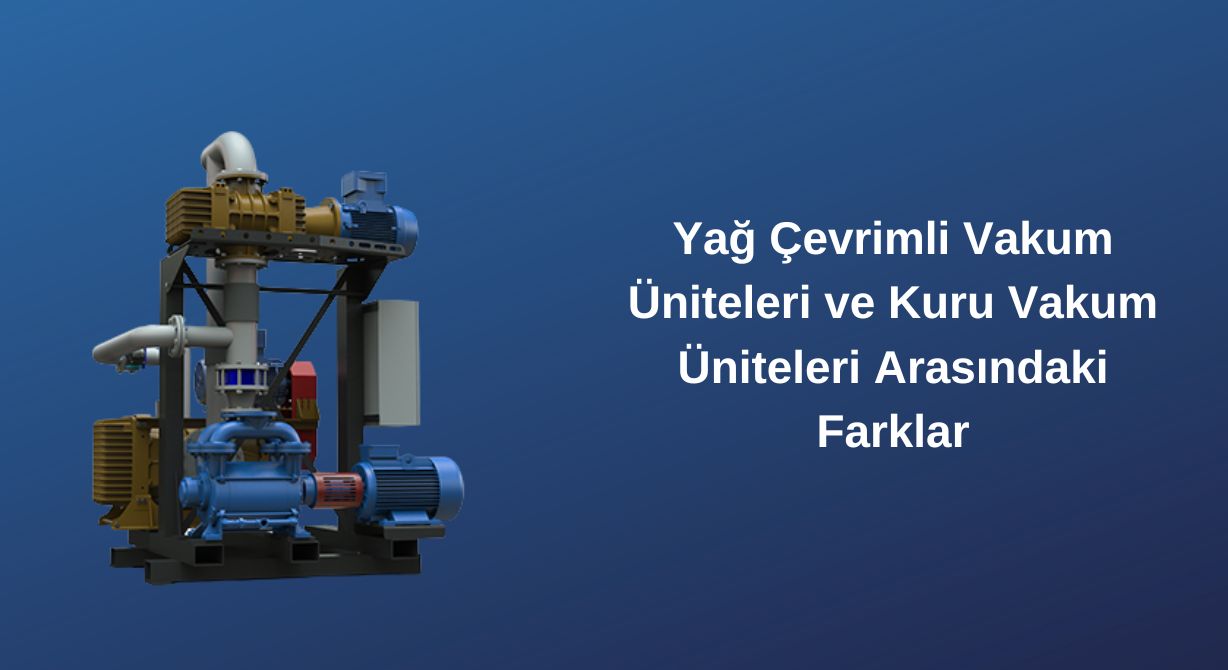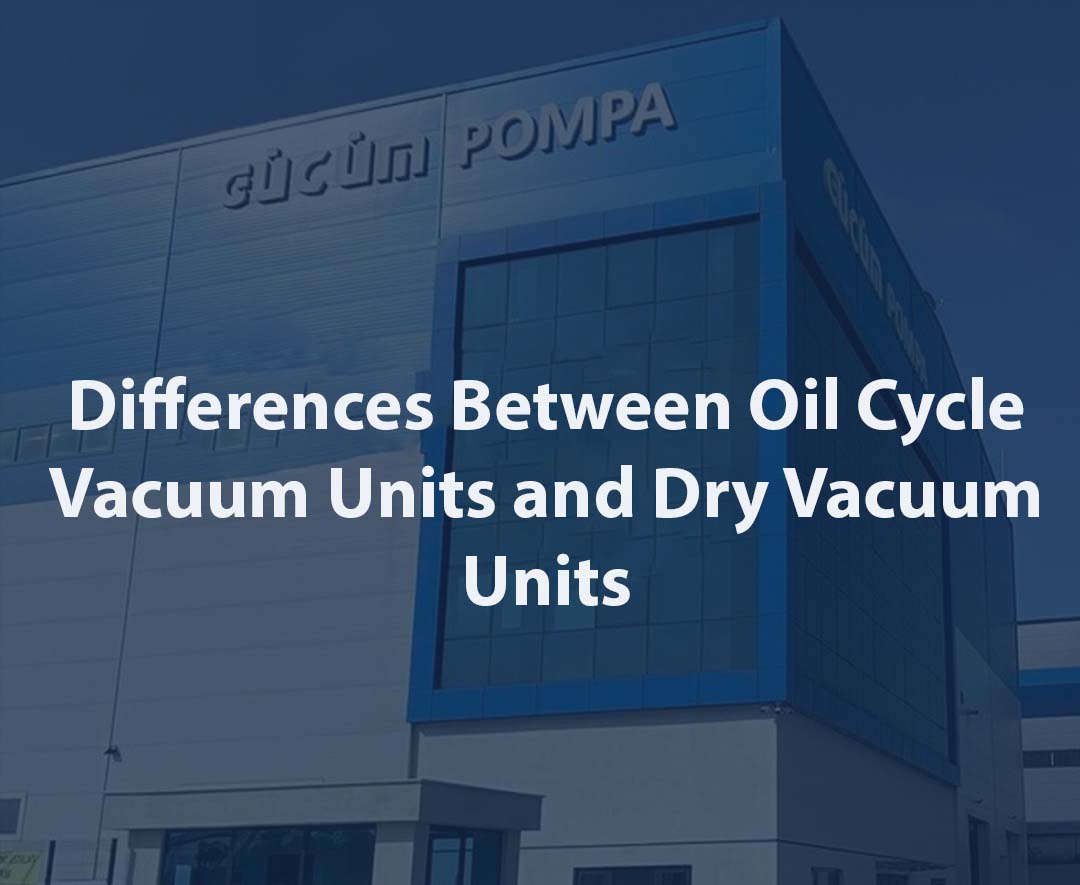Differences between Oil Cycle Vacuum Units and Dry Vacuum Units
Table of Contents
- Differences Between Oil-Sealed Vacuum Units and Dry Vacuum Units
- Operating Principle
- Application Areas
- Advantages
- Maintenance and Durability
- Comparison of Oil-Sealed Vacuum Units and Dry Vacuum Units
- Criteria for Choosing the Right Vacuum Unit
- Energy Efficiency and Environmental Impacts
- Oil Usage and Filtration Processes
- The Future in Industry
Differences Between Oil-Sealed Vacuum Units and Dry Vacuum Units
The biggest difference between oil-sealed vacuum units and dry vacuum units lies in the technology used and the role of oil. Oil-sealed systems use oil within the pump to reduce friction, thereby enabling lower vacuum levels to be achieved. These oil-based systems, in particular, provide more efficient results in industrial applications requiring high vacuum levels. Dry vacuum units, on the other hand, operate without oil and offer an environmentally friendly alternative, but they can generally achieve more limited vacuum levels.
Oil-sealed vacuum units have high temperature resistance and can operate continuously for long periods, while dry vacuum units are suitable for shorter-term operation at lower vacuum levels. Oil-sealed systems require less maintenance in terms of upkeep and durability, whereas dry vacuum units may occasionally necessitate additional maintenance needs such as oil changes and filtration. These differences determine the advantages and disadvantages of both systems based on their application areas.

Operating Principle
Oil-sealed vacuum units evacuate air and gases from the vacuum chamber through mechanical pumps, thus creating low pressure. In this system, oil is used to reduce friction between the moving parts inside the pump, thereby preventing wear on the pump components. At the same time, the oil enhances the pump’s airtightness, making the vacuum more stable and efficient. Oil-sealed systems are highly efficient in terms of performance because the additional sealing provided by the oil allows for much lower vacuum levels to be achieved.
Dry vacuum units, on the other hand, operate without oil. In such systems, airtightness is maintained to achieve high vacuum levels, while friction between the moving parts inside the pump is kept to a minimum. Dry vacuum systems may be preferred in certain industries due to their environmental friendliness, but they can exhibit limited performance compared to oil-based systems.
Application Areas
Oil-sealed vacuum units are particularly used in the plastics and rubber industries for vacuum molding processes. Additionally, they are frequently preferred in the food sector, especially for packaging and sterilization processes. In medical and laboratory fields, these systems are utilized for analytical devices and sterilization equipment. Oil-sealed vacuum systems are widely used in precision manufacturing processes requiring high vacuum levels.
Dry vacuum units are generally preferred by businesses seeking environmentally friendly alternatives. Particularly in food processing, pharmaceutical production, and the electronics sector, dry vacuum systems are used in situations where low vacuum levels are sufficient. These systems are suitable for use in areas that need to be kept free of contaminants and minimize environmental impact due to their oil-free operation.
Advantages
The advantages of oil-sealed vacuum units include high efficiency, long-term continuous operation, and low maintenance requirements. Oil reduces friction in the vacuum pump, preventing performance loss and ensuring longer usage. These systems are particularly preferred in industries requiring high vacuum levels. Oil-sealed units offer cost advantages to businesses by providing lower energy consumption and high performance.
Dry vacuum units stand out for their environmental friendliness. Since no oil is used, the risk of leakage and environmental pollution is lower. The lower maintenance requirements of these systems provide an advantage for businesses seeking cost-effective solutions. Dry vacuum systems also contribute to businesses’ sustainability goals with their low energy consumption and eco-friendly features.
Maintenance and Durability
Oil-sealed vacuum units can operate durably for long periods when regular maintenance is performed. The oil needs to be changed at specific intervals, filtration systems must be cleaned, and internal pump checks are required. Since oil usage prevents wear, it can be said that these systems require less maintenance. Oil-based vacuum systems are resistant to high-temperature conditions and can operate efficiently for extended periods.
Dry vacuum units, on the other hand, may generally have a shorter lifespan and require more frequent maintenance. The absence of oil in these systems means there is no additional feature to reduce friction. The maintenance costs of dry vacuum systems may be higher compared to oil-based systems, and they may not be as durable as oil-sealed vacuum units under certain conditions.
Comparison of Oil-Sealed Vacuum Units and Dry Vacuum Units
Oil-sealed vacuum units offer more efficient solutions for meeting high vacuum requirements. These systems reduce friction inside the pump thanks to oil usage and can operate for longer periods. Dry vacuum units are preferred for their environmental friendliness but are generally suitable for lower vacuum levels. While oil-based systems provide more efficient results, dry systems may have an advantage in terms of environmental impact.
Oil-sealed systems have high temperature resistance, whereas dry vacuum units are typically effective for shorter-term use. Oil-based vacuum systems operate more stably at every stage of industrial processes, thus ensuring high efficiency and a low failure rate.
Criteria for Choosing the Right Vacuum Unit
The choice between oil-sealed vacuum units and dry vacuum units should primarily be based on the business’s needs. Oil-sealed systems should be preferred for applications requiring high vacuum levels and continuous operation over long periods. For businesses seeking environmentally friendly solutions and operating at low vacuum levels, dry vacuum units may be ideal. The most suitable option should be determined by considering the advantages and disadvantages of both systems.
When selecting a vacuum unit, factors such as energy efficiency, ease of maintenance, durability, and environmental impacts should be taken into account. These factors will assist in choosing the right vacuum system and ensure the business operates efficiently in the long term.
Energy Efficiency and Environmental Impacts
Oil-sealed vacuum units provide high efficiency, enabling energy savings. Oil usage enhances the pump’s performance and ensures lower energy consumption. However, the environmental impacts of these systems must be managed by properly disposing of the used oil. While oil-based systems offer energy savings, they may pose some challenges for businesses seeking eco-friendly solutions.
Dry vacuum units consume less energy due to their environmental friendliness and minimize environmental impact with zero oil usage. These systems offer suitable solutions for businesses with sustainability goals. However, since dry vacuum systems are typically used at lower vacuum levels, they may exhibit some performance limitations.
Oil Usage and Filtration Processes
In oil-sealed vacuum units, oil must be continuously cleaned and filtered. The effectiveness of filtration systems ensures the system’s longevity and keeps the oil consistently clean. The accumulation of contaminants in the oil reduces pump efficiency and increases energy consumption. Therefore, the proper functioning of oil filtration systems maintains the vacuum unit’s high performance and provides savings for your business.
In oil-sealed systems, properly filtering and renewing the oil is essential for ensuring efficient operation over long periods. Dirty oil can damage pump components and lead to performance loss. Hence, regular maintenance and oil changes are important.
The Future in Industry
Oil-sealed vacuum units are rapidly evolving in the industrial sector with the pursuit of more efficient and environmentally friendly solutions. In the future, it is expected that vacuum systems with higher efficiency, lower energy consumption, and less environmental harm will become widespread. These systems will make industrial processes more sustainable, reducing businesses’ long-term environmental impacts. New technologies will offer vacuum units that require less maintenance, have longer lifespans, and increase efficiency in the industry.
Industrial vacuum systems will become smarter and more connected in the future, enabling remote monitoring and maintenance. This will allow businesses to manage maintenance costs more efficiently. As a result, with technological advancements, oil-sealed vacuum units are expected to provide higher efficiency, durability, and environmental benefits.


